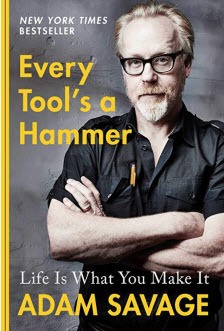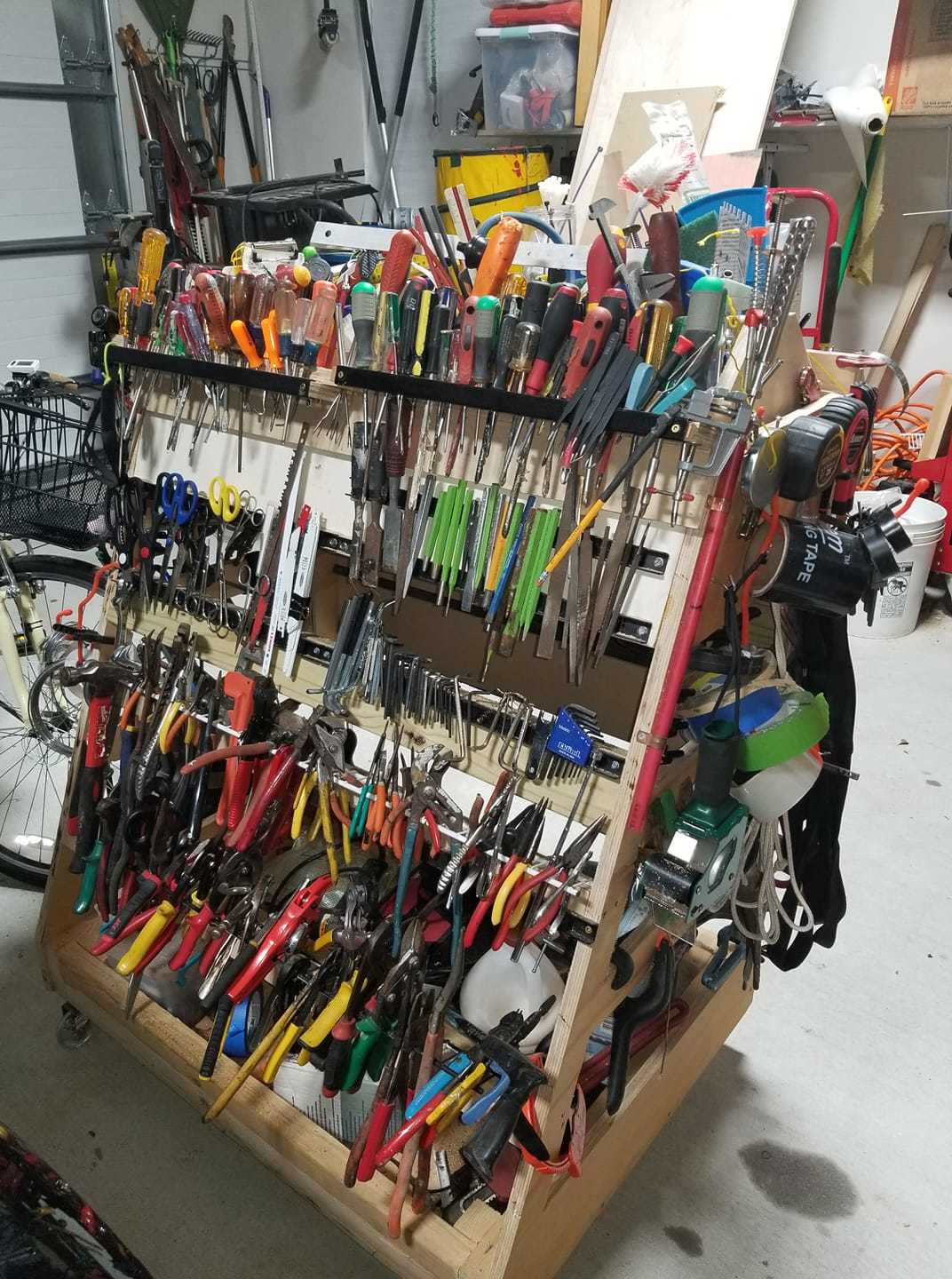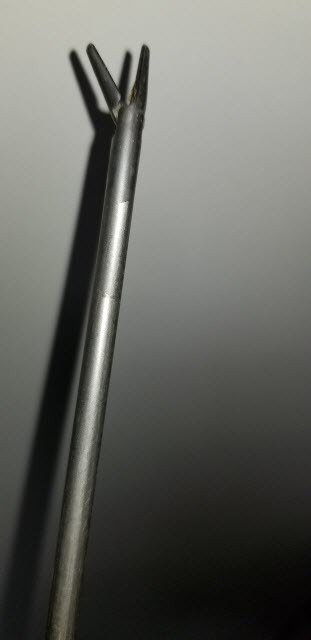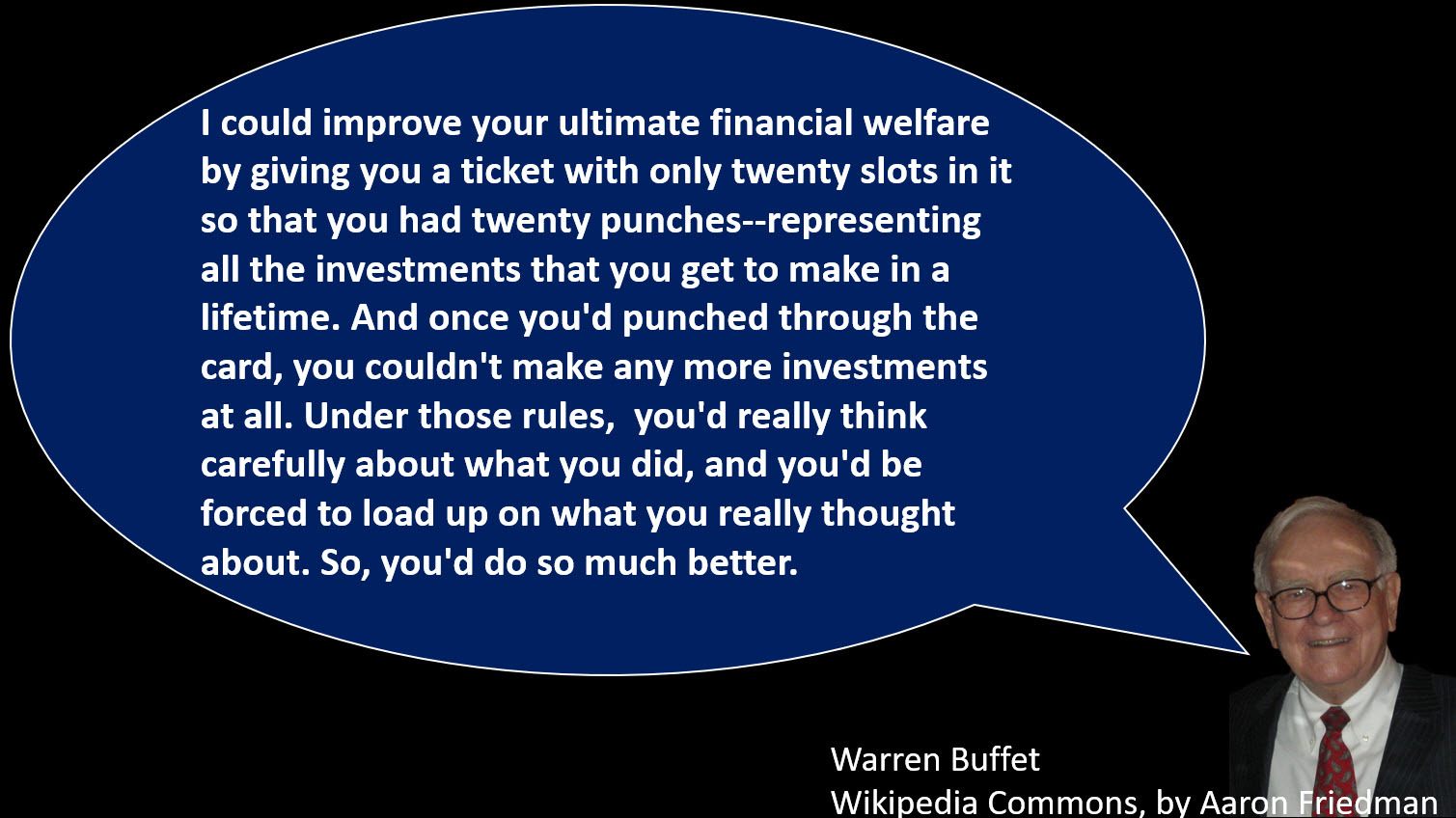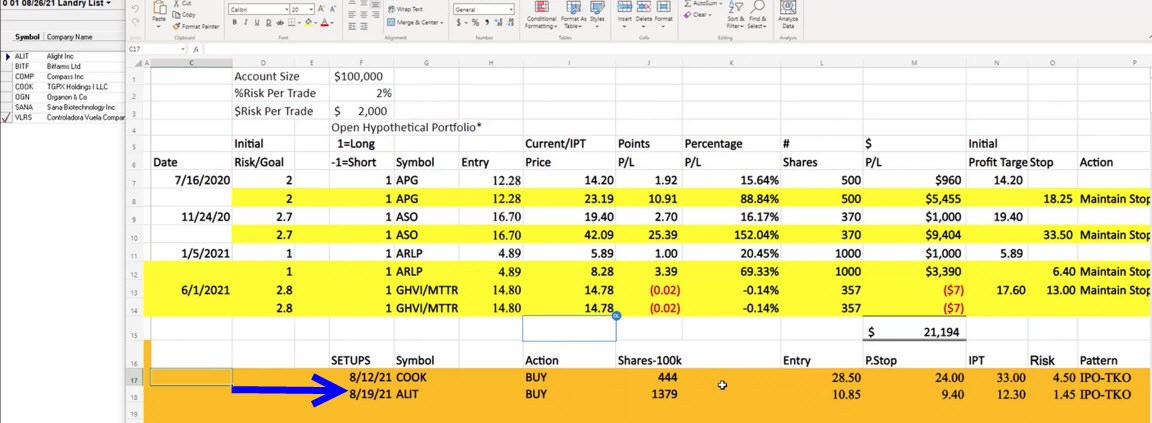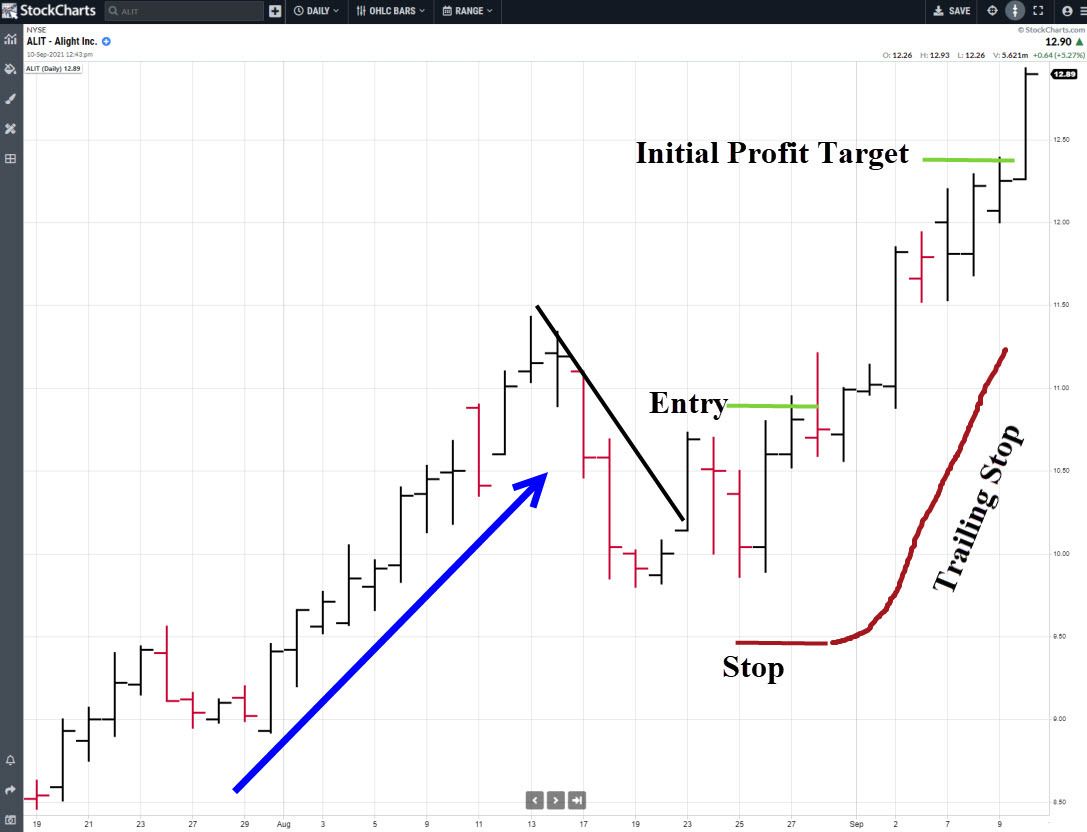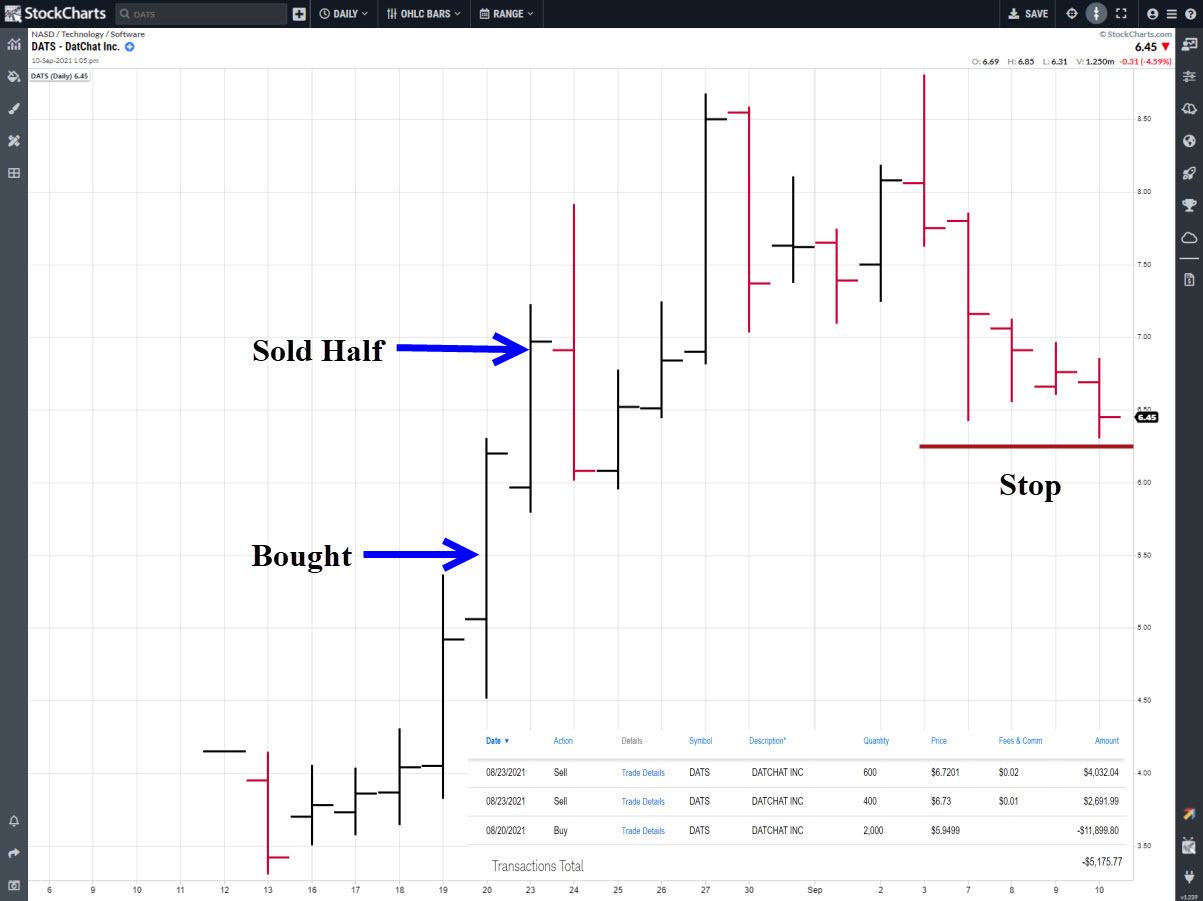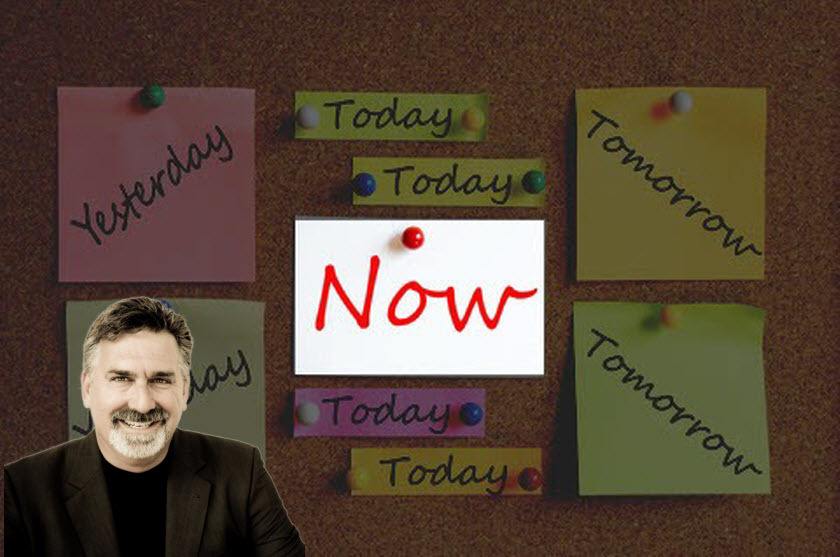
Now With Dave Landry-Your “Ticket” To Trading Success
By Dave Landry | Random Thoughts
Now With Dave Landry-Random Thoughts On What Dave's Doing
AWOL?
Since I’ve been somewhat AWOL-other than to those in my Facebook group-I thought I’d let you know what’s up. I’ve been dealing with some hurricane Ida related issues. We’re fine. A tree landed on our house but it doesn’t appear to have done any damage (other than to my wallet to remove it!). It’s all about perspective-a tree totaled the house across the street. We’re back on the grid power. It’s been a lot of other issues like helping some less fortunate friends here and there. And, a few “first world” problems like slower wireless internet vs. my superfast cable. Again, we’re good and we were lucky! Thanks again to you who sent me well wishes!
What I'm Reading
I’m nearly done with Every Tool Is A Hammer by Adam savage.
I never realized that there was a name for what I do. I'm a maker. Over the past several decades, I’ve restored cars (okay, one, well, almost-after 12+years my wife gave up-otherwise, I’d still be “going strong”), remodeled a bathroom or two (plumbing, carpentry, and electrical-Marcy won’t let me get into tiling), and built or fixed a ton of other stuff. True, some of these things are frivolous-e.g., I have the unofficial record for the largest rocket ever launched in Louisiana (it's actually bigger than the one below)-but I’ve learned valuable skills and collected a massive tool collection in the process. It’s also given me the freedom to try and often fail. An ex-neighbor, who was not trying to be flattering, once said: “Whether Dave knows how to do something or not, he’s going to try.” I took it as a compliment. Through many failures I have learned how to do a lot of things. A friend of mine has nicknamed me MacGyver.
Speaking of friends, one of the (few? Lol) things my friends love about me-in addition to the wonderful handmade Christmas gifts (laugh)-is my ability to fix things or come up with creative solutions for their problems. At the least, I usually have the exact tool that they need. “Do you have a router?” Yes, I have a half a dozen (OK, I have seven but who's counting?). “My kid flushed a toothbrush down the toilet. What should I do?” Remove the toilet, use my surplus long surgical grabbers to grab the toothbrush. Just wash the shit out of the pliers before returning them please.
Where was I? Oh, one point that Savage makes is that even if you aren’t sculpting things with your hands, we’re all makers in some way, shape, or form. When I write, share my thoughts, ideas, search for the next big winning stock, or research ways to trade less but better, I am making. You doctors, lawyers, and automatic transmission mechanics are makers too.
Reading the book reminded me that I'm happiest when I'm making. Lately, I’ve found myself a little bummed and it’s probably because I haven’t been creating much online and at home. Making inspires. With each new skill many more skills come. There's also a reward and figuring something out. For instance, I could never figure out how to drill plexiglass without cracking it. I used to hate working with plexiglass. Thanks to an Adam Savage video, I now use the right drill bit and cooling fluid/lubricant (H2O). I now enjoy drilling holes in plexiglass-although, I realize that you might find it “boring.” What does all this have to do with trading? I dunno. Scott Adams once said that when you learn a new skill set it doubles your chances of success. By learning how to patch a hole in the drywall (blend in via sanding and filling an area much larger than the hole), I learned how to blend in new sheet metal on a car fender. I realize that you could argue that this type of making could be related. I haven't wrapped my head around how learning a new skill set in one area can help you in a completely different skill area, but I can tell you that creating inspires more creating. So, create!
I don't think Scott Adams was referring to it from a motivational standpoint, but, as mentioned above, creating puts you in a good mood. And, that will then spill over into other areas of your life. Being a little holistic, being happy will make you a better trader (and doctor, lawyer, or automatic transmission mechanic).
Anyway, back to the book. I found it an interesting and enjoyable-although you might not enjoy an entire chapter on cardboard as much as I did. He talks about finding his way in life, special effect movie projects, hobby builds, and working for Jamie Hyneman and later with him on Mythbusters. If you’re looking to become a little more handy or an easy read about someone who’s found their calling (or learning more about cardboard!), then read it.
The Trading Ticket Project
In the back of my mind, I've been thinking about “trading tickets.” Inspired and borrowing from the Buffet quote below, with quite a few caveats, the premise is that you only have X amount of tickets to “spend” on trades for a given amount of time. Therefore, you have to spend them wisely. You're not going to throw one away on a mediocre opportunity.
I haven't wrapped my head around how to make this a product-yes making something a product makes money (hopefully) but there's a little more to it than that. It forces me to do the work. If I wasn’t running my Core Trading Service nightly, I can guarantee you, especially on shitty days, that I wouldn't spend a couple of hours looking for new opportunities. I would likely have a beer or three. However, knowing that people are depending on me to find opportunities (if any), I put my nose to the grindstone and dig through the database. As mentioned before, many times I see that things aren't quite as bad as they initially felt (e.g., my stocks are just having a normal correction and the market sell-off has actually created some new opportunities). I know this is hypothetical, but I would not feel better about my positions and certainly not find new opportunities, if I were having a beer instead of sitting here. As another example, I would be willing to bet good money that my IPO trading would vastly improve if I had an actual service vs. me scrambling to do my analysis last minute based on managing open trades and business “fires.” There’s just not enough time in the day.
Anyway, I hadn't wrapped my head around how to make trading tickets a product (which would force me to figure it out) but I do obviously have some thoughts. Maybe you purchased a set amount of tickets and I consult with you on “spending them.” Further, I put my money where my mouth is by taking the same exact trades. Not that I’m the Grand Poombah, but I can assure you that I would think long and hard before putting my hard-earned capital into harm's way. Therefore, your setups better be good ones! I think I'd also go out on a limb to guarantee that your ideas that are true to the core methodology with my reputation (and capital) on the line that it would be a profitable endeavor overall. I’m not saying on every trade, but after all tickets were spent, I'd be willing to bet that you (and I!) will be pleasantly surprised. I probably should do the first run on my own to prove that being super selective can really pay off. So, keep an eye out for that.
Random Thought: As I publish this I'm thinking that this will probably be the least profitable product ever developed (e.g., due to "scaling"). However, as far as results, again, I'm willing to bet that the results would be stellar!
The Waiting Is The Hardest Part (Unless You've Been At This For A While)
Speaking of being super selective, recently, I went around a month without recommending any new setups. And, from setup trigger to the next setup trigger it was around 50 days. My new clients came and went like a revolving door during that period, thinking why would I pay this guy to tell me to do nothing?!? My older clients appreciated my candor-if Big Dave’s not putting his money on the line on core trend trades, then why should I? About four weeks into my doing nothing I made the statement: “I’d be willing to bet that one of my next five picks will turn it to the big one!” One of you rightfully cautioned me on the dangers of making such a prognostication. No, I’m not saying this to brag nor, do I now have some sort of crystal ball. I’m just thinking after 30-something days (it ended up being 49-days until the next trigger, ALIT below) of waiting patiently for setups and entries, one of the next five trades will make all that waiting worthwhile.
Could this one be THE ONE of the "next five?" I’ll follow up on this one and the next four in the Week In Charts or Random Thoughts.
I took a break while writing this to discuss tree issues thanks to hurricane Ida with a neighbor and Marcy-we might not be so lucky next time if we don't remove a serious threat. Anyway, on my way back, I wondered if I might be coming off a little cocky? Well, I think the answer to that is if I’m 100% convinced that I can do really well longer-term IF I’m super patient shorter-term. And, that’s a big IF-an “if” we can both work to improve. The “we” part reminds me of part of a recent post in Facebook group (while answering someone who seemed to be struggling a bit):
"I recently worked with someone who was struggling. They had no idea how close they really were [to making it]. They could pick really good setups but also dealt in a lot of mediocrity. When they started showing me their trades, they were like, I know this one really wasn't that great going in...and I know this one was a little choppy....etc.. The stock selection is VERY learnable, as is the money management. It's the psychology to do the right thing and see clearly that takes a little longer--and yes, like Michelangelo at 80, [I am ] ancora imparo!"
Anyway, if there is a secret to trading it’s likely spending your tickets wisely!
What I’m Trading
Well, as mentioned above, I haven’t taken a lot of core trend trades as of late. I’ve taken a few outside of the official recommendations (off of my Landry List). Some of these were "Russian Dolls" (intra-day setups within setups) and others were position trades. There's nothing really to brag about. I’ve done okay with a few “Buy At B” trades in IPOs and failed miserably on some too. DATS for instance, is a winner so far (Buy At B plus one)-although I might be stopped by the time this is published-and MCW turned into a turd.
I’ve been having a blast trading Shytcoins as of late-well, at least until the momentum run ended. As mentioned in recent Week In Charts, sometimes trading a momentum market can be as simple as buying them when they go up (see the recent Week In Charts-below-for exact instructions). The trend is your friend until it ends-which isn’t a problem as long as you have a chair ready and can live with the drawdowns to open profits. Let’s say you want to have a baby. Babies are great! However, if you’re going to have a baby, you’re going to have a lot of baby poop.* Likewise, trading trends is great but you’re going to have to deal with it ending badly.
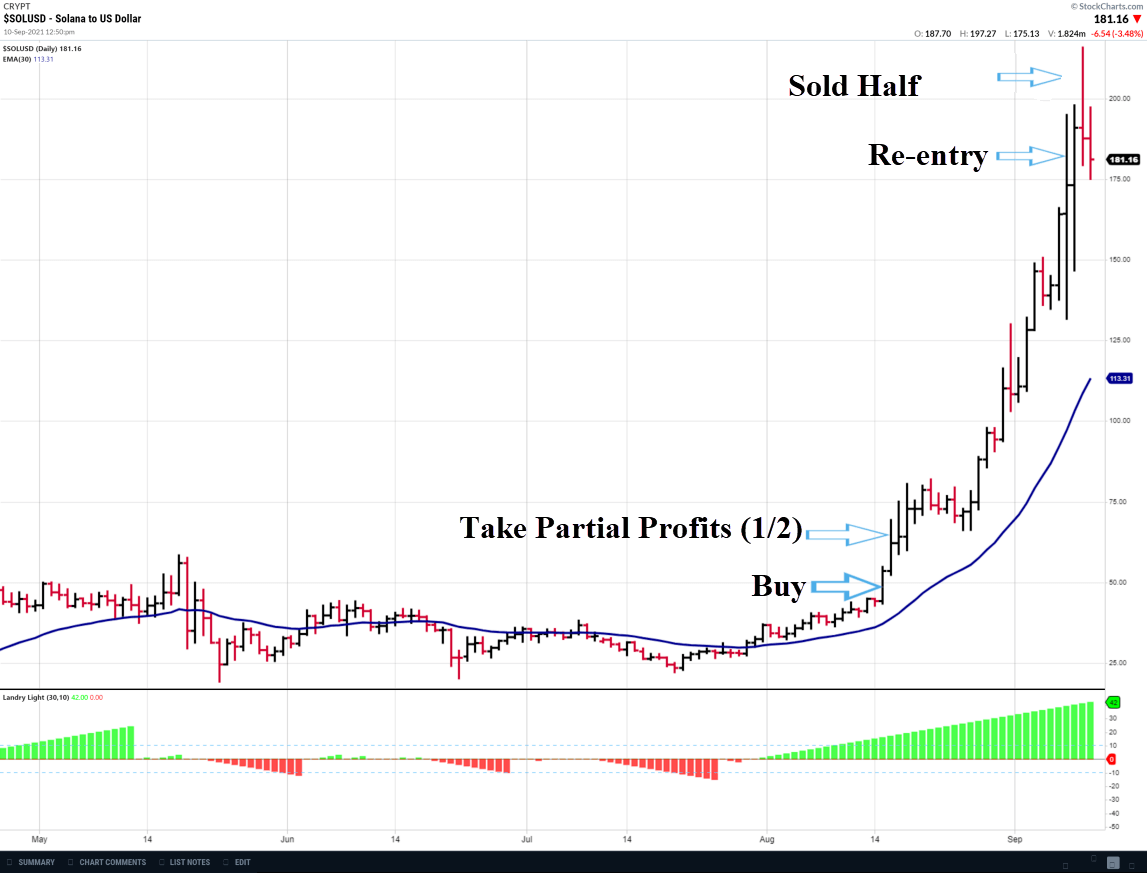
The good news is that many of the Shytcoins have started to wake up again. On some, I’m once again simply buying them because they are going up. On others, I’m buying pullbacks (e.g. Landry Light Pullbacks to the 30-EMA) but only once they start going back up.
Well, that's about it for now! I hope things settle down enough for me to get back to creating. I'm going to make a serious effort to do both a Trading Simplified Show and The Week In Charts next week. Let me know if you have any requests.
May The Trend Be With You!
Dave Landry
*Mike Moody's answer when I asked him about momentum ended badly



